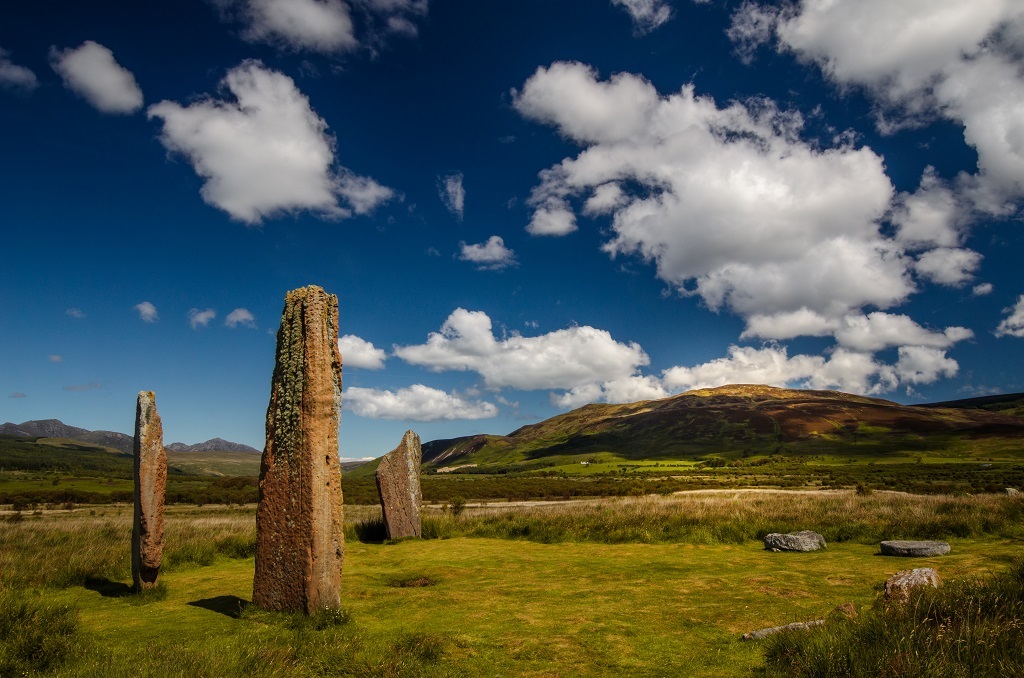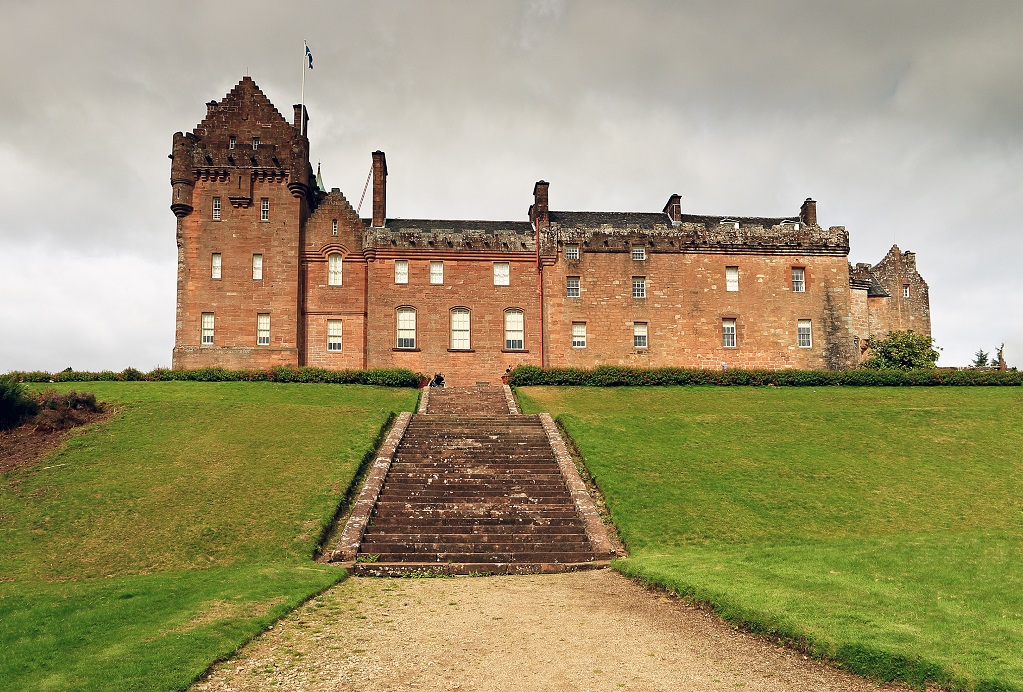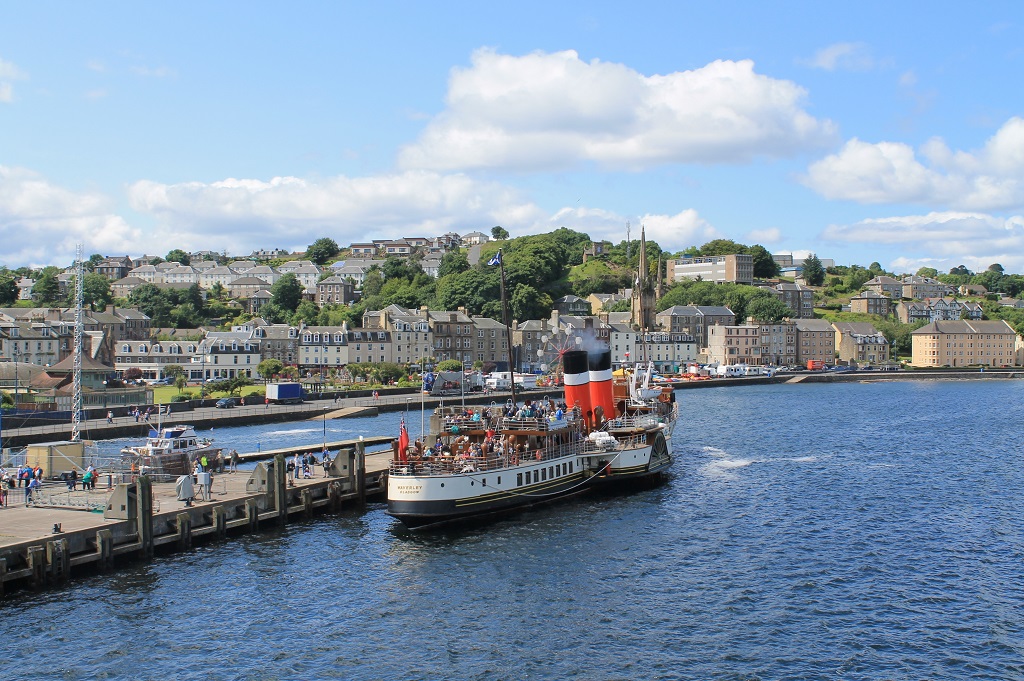
The Firth of Clyde presents Scotland in miniature
An air of mystery seems to shroud the firth of Clyde, now for the most part laying eerily still, this stretch of water has seen battles rage, mysteries conjured, and myths born.
Towering over this stretch of black water stands the Isle of Arran, or should we say Emhain Abhlac: sea fortress of the ancient gods?
Visitors will take their first glimpse of the island from the bow of the ferry when leaving Ardrossan, and its crests and jagged coastline make it an inspiring sight.
Arran means ‘peaked island’ in Gaelic and is often described as ‘Scotland in miniature’. Arran’s natural diversity epitomises the whole nation of Scotland; with its rugged countryside in the south, giving way to lofty mountains in the north. But the comparison can be made on many different levels, from Arran’s food produce, to its offers of sport.
But a comparison that is not normally made is Arran’s representation of Scotland’s history. The island has seen, and bears the evidence of, each phase and era of Scotland’s past, stretching from prehistory to the modern age, drawing both historical, and recreational tourists for many years.

Near the village of Machrie on the Isle of Arran stand six Bronze Age stone circles
There are many ancient places on this island, over a hundred burial cairns, many forts and fortresses, and many more settings of legendary tales. The island has been a popular destination for tourists since the Victorian era, when many of these families came to view the evidence of thousands of years of history condensed into an island less than 20 miles long.
It is a history that dates back as far as the Stone Age, perhaps as far as 7000BC: well before Stonehenge and the Great Pyramid of Giza.
Stepping into the earliest records in history, the Bronze and Iron Ages, Arran was originally part of the Irish kingdom of Dalriada; and the cairns and houses of these early people dot the islands south west. In the 6th century Christianity arrived on the island with the founding of a monastery at Kilpatrick, and later on the Holy Isle in Lamlash Bay. Trips out to the Holy Isle can be arranged from Lamlash pier.
The view from the top of Mullach Mor is spectacular on a sunny day, and very well deserved after the 1026ft climb from sea level.
However the peace on Arran was not to last and by the late eighth century there was a new power in the region: the Vikings.
In the following centuries the Vikings, who came first as raiders and later as settlers, would contest their new lands bitterly with the locals and the Scottish crown. Sliddery, on Arran’s west coast, is said to derive its name from the old Gaelic for ‘field of slaughter’, as a gory skirmish took place there, in which a Viking war party was routed.
Alexander III of Scotland’s victory over the Vikings at Largs in 1263 ended the threat from the north, but though the Vikings gave up the island advantage of the quarrel over the succession to the Scottish throne after Alexander’s death, English armies, under Edward I, invaded Scotland. All over Scotland battles raged to eject the invaders. On Arran, Brodick Castle was taken by the English, who held it until 1307 when it was taken back by Robert the Bruce’s forces.

Now a ruin, Lochranza Castle dates back to the 13th century. Robert the Bruce landed here in 1306 on his return from Ireland to claim the Scottish throne.
However, the island has a deeper history with Robert the Bruce; according to legend, Bruce, at one point on the verge of giving up his fight to gain Scottish independence from the England, had escaped pursuers by fleeing to Arran, where he had visited as a child. While hiding out in a cave he noticed a spider on one of the walls. The spider span web after web, only to have it collapse from the slippery stone.
Again and again the spider built its home, never giving up no matter how many times it failed, and eventually the web held. Bruce was said to have been inspired by this to try again against his foes, afterwards crossing onto the mainland from what is known as Kingscross Point and finally leading the Scots to the famous victory at Bannockburn.
The King’s Cave is accessible via a fairly easy walk from the village of Shiskine, and takes in the beautiful eastern coast of the island along a section of the Arran coastal way, a 65 mile long circular route taking in all of the island’s coastline; it is also a perfect opportunity to spot some of the fantastic wildlife Arran has to offer. Basking sharks and many species of wild birds have been spotted along this unspoiled stretch of the Kilbrannan Sound.

Once home to the Dukes of Hamilton, Brodick Castle lies on the east coast of Arran
Besides changing hands between warring countries, Brodick Castle has also been in the thick of many religious battles. Being held through the 1600s between the Episcopals and the Presbyterians, Brodick Castle was finally returned back into the hands of James Hamilton in 1644, at the beginning of the Scottish civil war. Transformed in the early Victorian era to the stately home and hunting lodge we see today, the house was given over to the National Trust for Scotland in 1958, and is a popular attraction on the island.
The castle is easily reachable via bikes, hired from near the ferry terminal in Brodick. Cycling itself is an increasingly popular way to enjoy the scenery of the island, and brings many tourists to Arran every year.
A jump across the firth finds you on another ancient island. Lying low in the water, the Isle of Bute has cemented its place in Scottish history thanks to its connection with Scotland’s royal families. The short ferry ride from Wemyss Bay gives way to the impressive views of the island’s capital town of Rothesay, and central to the tale of the turbulent past of the island is Rothesay Castle.

The capital town
of Rothesay on the Isle of Bute was a popular tourist destination in the Victorian era
Following the rise of the Stewarts to the Scottish throne, the castle became a favourite residence of Kings Robert II and Robert III.
Robert III made his eldest son David Duke of Rothesay in 1398, beginning a tradition of honouring the heir apparent to the Scottish throne with this title. This continued beyond the Union of the Crowns in 1603 and is held today by Prince Charles, among his other titles.
Bute has one of the finest Victorian mansions in the UK; Bute’s Mount Stuart is an intricate and ambitious example of Victorian Gothic architecture.
Completed with a white marble chapel that wouldn’t be out of place in Venice, this truly is a house of firsts; it is believed Mount Stuart was the first home in the world to have a heated indoor swimming pool, and the first in Scotland to be purpose built with electric lights, central heating, a telephone system and a passenger lift. Most of which are, quite astonishingly, still in use today.
For the nature lover, Bute’s wilderness has much to offer, its coastline peppered with secluded bays for picnics, paddling, and seal-spotting; and for when night descends, Rothesay becomes a vibrant town, particularly in May, when the jazz festival transforms the art deco Pavilion each year.
In all, there are not many places in Scotland where myth and legend blend so easily with history, and history with a way of life. The Firth of Clyde’s major islands are a must see for those wanting to experience all Scotland has to offer on a condensed scale.
TAGS

